Crafting DIY Bird Feeders for Your Garden Decor
Have you ever thought about how magical it would be to have a vibrant array of birds visiting your garden? Imagine the colorful feathers fluttering about, the gentle chirping filling the air, and the sheer joy of watching nature unfold right before your eyes. Crafting your own DIY bird feeders is not just a fun project; it’s a way to enhance your garden decor while creating a welcoming space for our feathered friends. In this article, we’ll explore creative ideas and step-by-step instructions that will help you make beautiful bird feeders, turning your backyard into a lively sanctuary for various bird species. So grab your tools, unleash your creativity, and let’s dive into the wonderful world of birdwatching!
When it comes to building bird feeders, selecting the right materials is absolutely crucial. You want your feeder to be not only durable but also safe for the birds that will be visiting. There are a variety of materials you can use, each with its own set of benefits. For instance, wood is a classic choice that blends beautifully with nature, while metal can offer longevity against the elements. Here’s a quick rundown of some common materials:
| Material | Benefits |
|---|---|
| Wood | Natural look, good insulation, and can last for years with proper treatment. |
| Plastic | Lightweight, easy to clean, and often weather-resistant. |
| Metal | Highly durable and resistant to pests, but can get hot in the sun. |
By choosing materials wisely, you ensure that your bird feeder will withstand the elements and attract birds effectively. Remember, the goal is to create a safe haven for our avian friends!
Now that we’ve covered materials, let’s get into the fun part: design! There are countless design concepts for DIY bird feeders, ranging from simple to intricate. Whether you have a modern garden or a rustic backyard, there’s a feeder design that will fit perfectly. For example, if you love a traditional look, wooden feeders can be beautifully crafted to suit your aesthetic. On the other hand, if you’re feeling adventurous, consider using recycled materials to create unique and eco-friendly feeders. Here’s a taste of what you can create:
- Traditional Wooden Feeders: Classic and sturdy, perfect for various bird species.
- Hanging Feeders: Versatile designs that can be suspended from trees or hooks.
- Platform Feeders: Spacious areas for multiple birds to feed at once.
- Recycled Feeders: Creative use of everyday items like plastic bottles or tin cans.
Each of these designs not only serves a purpose but also adds a charming touch to your garden. So, which design speaks to you?
Wooden bird feeders are a classic choice that many bird lovers swear by. They’re sturdy, reliable, and can be built in various styles—think of them as the timeless classics of the bird feeder world. When selecting wood, opt for types that are naturally resistant to decay, such as cedar or redwood. These woods not only last longer but also provide a beautiful finish that complements your garden.
Hanging feeders are a fantastic option for those who want versatility and ease of placement. You can hang them from trees, hooks, or even your porch. This not only enhances visibility for the birds but also adds a touch of elegance to your garden decor. Consider designs that allow for easy refilling and cleaning, ensuring that your feathered visitors always have a fresh meal waiting for them.
If you want to cater to multiple birds at once, platform feeders are the way to go. These feeders provide a spacious area for birds to gather and feed simultaneously. They can be placed on the ground or elevated on poles, depending on your garden setup. Positioning them in open areas will maximize bird traffic, allowing you to enjoy the lively interactions between different species.
Using recycled materials to craft bird feeders is not only sustainable but also sparks creativity. Think about repurposing items like plastic bottles, tin cans, or even old wooden pallets. Not only do these projects help the environment, but they also give your garden a unique flair. Who wouldn’t love a quirky bird feeder made from a repurposed teapot or a colorful bottle feeder swaying in the breeze?
To attract a variety of birds, it’s essential to know what types of food to offer. Different species have different preferences, so a little knowledge goes a long way. Consider providing a mix of seeds, nuts, and fruits to cater to your feathered friends. Here’s a quick guide:
- Sunflower seeds: Great for attracting finches and chickadees.
- Peanuts: A favorite among woodpeckers and jays.
- Berries: Perfect for thrushes and robins.
By diversifying your offerings, you’ll create a welcoming environment that encourages a variety of birds to visit your feeders.
Bird feeding needs can change with the seasons, so it’s important to adjust your offerings accordingly. In winter, high-fat foods like suet and peanut butter can provide the energy birds need to survive the cold. During spring and summer, focus on seeds and fruits that help nourish nesting birds. By keeping an eye on seasonal changes, you can ensure your feeders remain a reliable food source for local birds all year round.
Identifying the birds you want to attract can enhance your feeding strategy. Common backyard birds like cardinals, blue jays, and sparrows each have their preferences. Understanding what they like will help you create a more inviting space. For instance, if you want to attract hummingbirds, consider adding a nectar feeder filled with a sugar-water solution. By tailoring your approach, you’ll create a welcoming environment that invites these beautiful creatures to your garden.
Q: How often should I clean my bird feeder?
A: It's best to clean your bird feeder every two weeks, or more often during wet weather to prevent mold and bacteria buildup.
Q: What type of food should I avoid?
A: Avoid feeding birds bread, as it offers no nutritional value and can be harmful to their health.
Q: How can I keep squirrels away from my bird feeders?
A: Consider using squirrel-proof feeders or placing feeders on poles with baffles to deter squirrels from accessing the food.
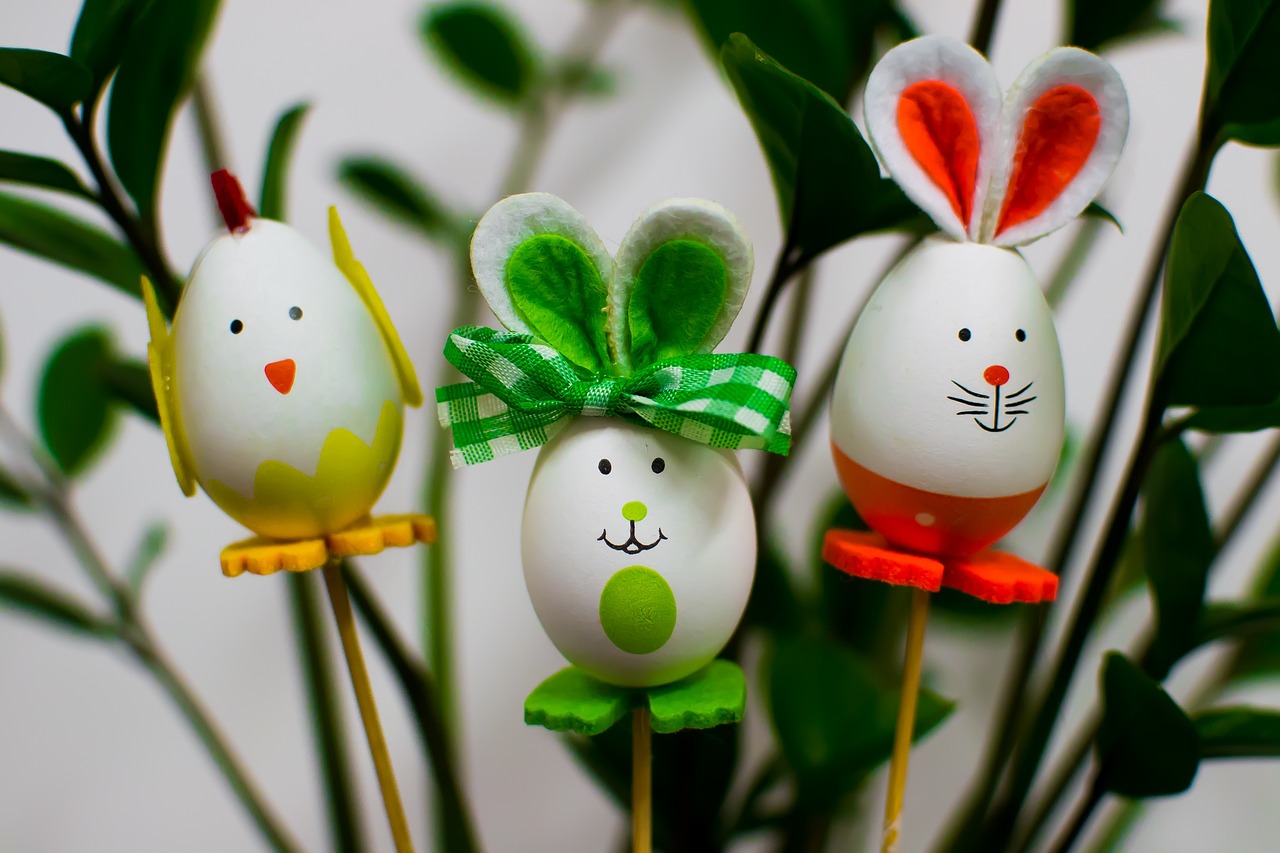
Choosing the Right Materials
When it comes to crafting your own bird feeders, is essential. Not only do the materials impact the durability of your feeder, but they also play a significant role in attracting a variety of birds. You want to create a cozy and safe dining spot for our feathered friends, right? Let's dive into some of the best materials you can use, along with their benefits.
First up, wood is a classic choice for building bird feeders. It’s not only sturdy but also blends beautifully into garden aesthetics. When selecting wood, consider using cedar or redwood; these types are naturally resistant to decay and insects. Additionally, they provide excellent insulation, which helps keep the seeds dry. Here’s a quick comparison of wood types:
| Wood Type | Durability | Insect Resistance | Cost |
|---|---|---|---|
| Cedar | High | Natural | Moderate |
| Redwood | High | Natural | High |
| Pine | Moderate | Low | Low |
Another fantastic option is recycled materials, which not only saves you money but also helps the environment. Think about using old plastic bottles or tin cans. These items can be transformed into unique feeders that are both functional and visually appealing. For instance, a plastic bottle can be turned into a hanging feeder by simply cutting holes for the seeds and attaching a perch. Not only are you repurposing waste, but you’re also giving birds a safe space to feast!
Next, let’s talk about metal. While it might not be the first material that comes to mind, metal feeders can be incredibly durable and resistant to squirrels and larger birds. However, it’s essential to ensure that the metal is treated to prevent rust. Look for galvanized steel or aluminum options, as they are lightweight and long-lasting.
Lastly, consider using glass for a stylish touch. Glass feeders can be stunning and allow you to easily monitor seed levels. However, keep in mind that glass can be more fragile than other materials, so it’s best suited for areas where it won’t be easily knocked over. Regardless of the materials you choose, always prioritize safety. Ensure that there are no sharp edges or toxic substances that could harm the birds.
In summary, the materials you select for your bird feeder can make a world of difference. Whether you opt for traditional wood, recycled items, durable metal, or elegant glass, what matters most is creating a safe and inviting environment for birds. So gather your materials and get ready to enhance your garden while making a positive impact on your local wildlife!
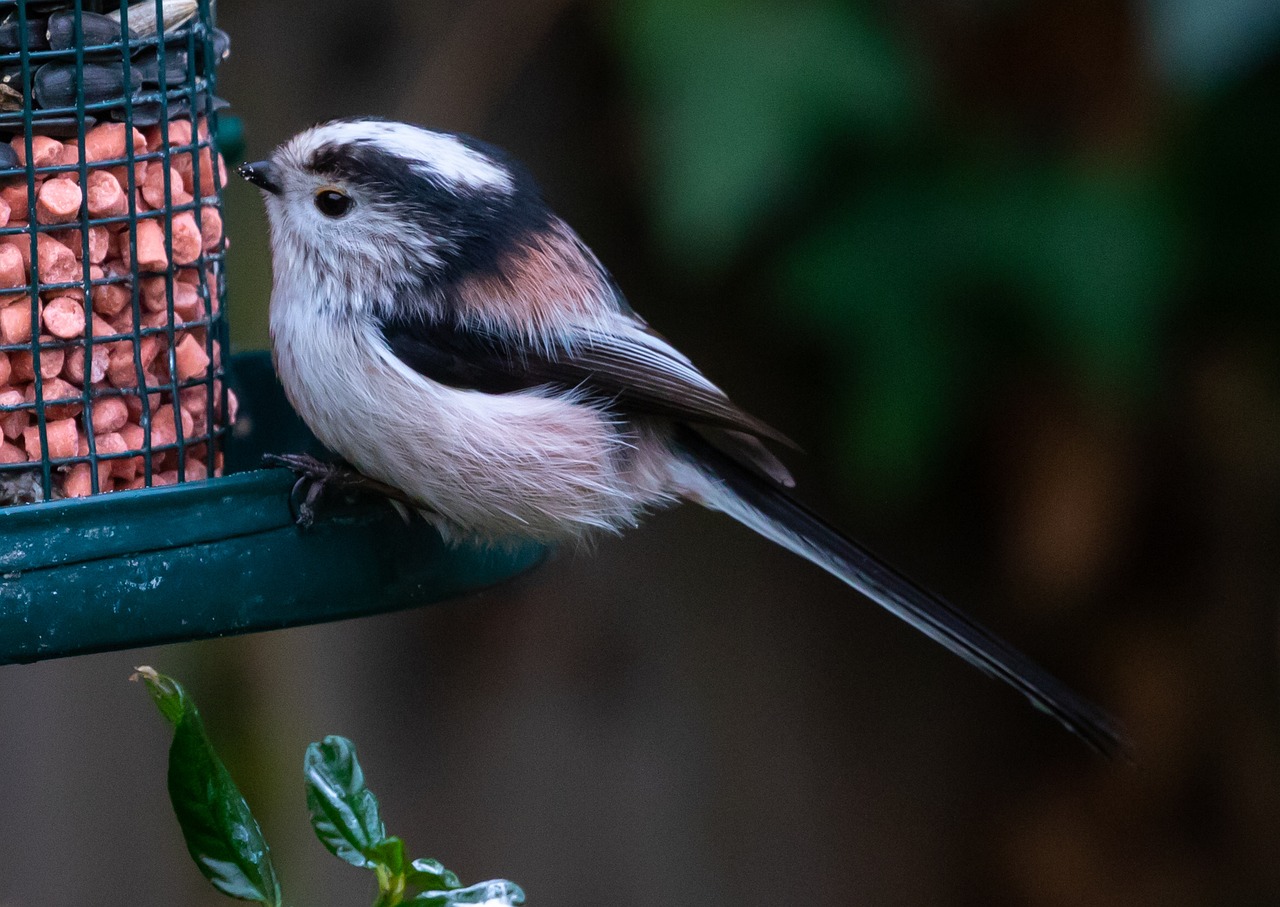
Design Ideas for Bird Feeders
When it comes to creating a bird feeder that not only serves its purpose but also adds a touch of charm to your garden, the design possibilities are virtually endless. Think of your bird feeder as a canvas where you can express your creativity while providing a vital resource for our feathered friends. From whimsical shapes to classic styles, the right design can transform your garden into a delightful haven for birds and a visual treat for you.
One popular option is the traditional wooden feeder. These feeders are not only sturdy but also blend seamlessly with natural landscapes. You can choose from various styles, such as the classic A-frame or a simple box design. The type of wood you select is crucial; cedar and redwood are excellent choices due to their resistance to rot and insects. To ensure longevity, consider finishing your wooden feeder with a non-toxic sealant that protects it from the elements while enhancing its aesthetic appeal.
For those looking for versatility, hanging feeders are an excellent choice. These feeders can be suspended from tree branches or hooks, allowing for easy visibility and accessibility for birds. Imagine a brightly colored feeder swaying gently in the breeze, attracting all sorts of birds as they flit about. You can get creative with the designs—think of using a teacup as a feeder or crafting a whimsical birdhouse that doubles as a feeding station. The key is to ensure that the feeder is securely hung and easily refillable.
Another fantastic design is the platform feeder. These feeders are spacious and allow multiple birds to feed simultaneously, making them perfect for attracting a variety of species. Constructing a platform feeder is relatively straightforward; all you need is a sturdy base and some sides to prevent the food from spilling. Position it in an open area of your garden, preferably near some shrubs or trees where birds can perch safely while they eat. This setup not only maximizes bird traffic but also creates a lively scene right outside your window.
If you're inclined towards sustainability, consider using recycled materials for your bird feeder. This approach not only helps the environment but also sparks creativity. For example, a plastic bottle can be transformed into a simple feeder by cutting holes for the seeds to dispense and hanging it from a tree. Similarly, tin cans can be painted and filled with birdseed, creating a rustic charm that birds will love. The beauty of using recycled materials is that you can experiment with different shapes and sizes, giving each feeder a unique character.
In conclusion, the design of your bird feeder can greatly influence not only its functionality but also its appeal in your garden. Whether you opt for a traditional wooden style, a hanging masterpiece, a spacious platform, or a creative recycled design, the key is to ensure it is safe, accessible, and attractive to birds. So, roll up your sleeves, gather your materials, and let your imagination take flight as you craft a stunning bird feeder that will make your garden the talk of the town!
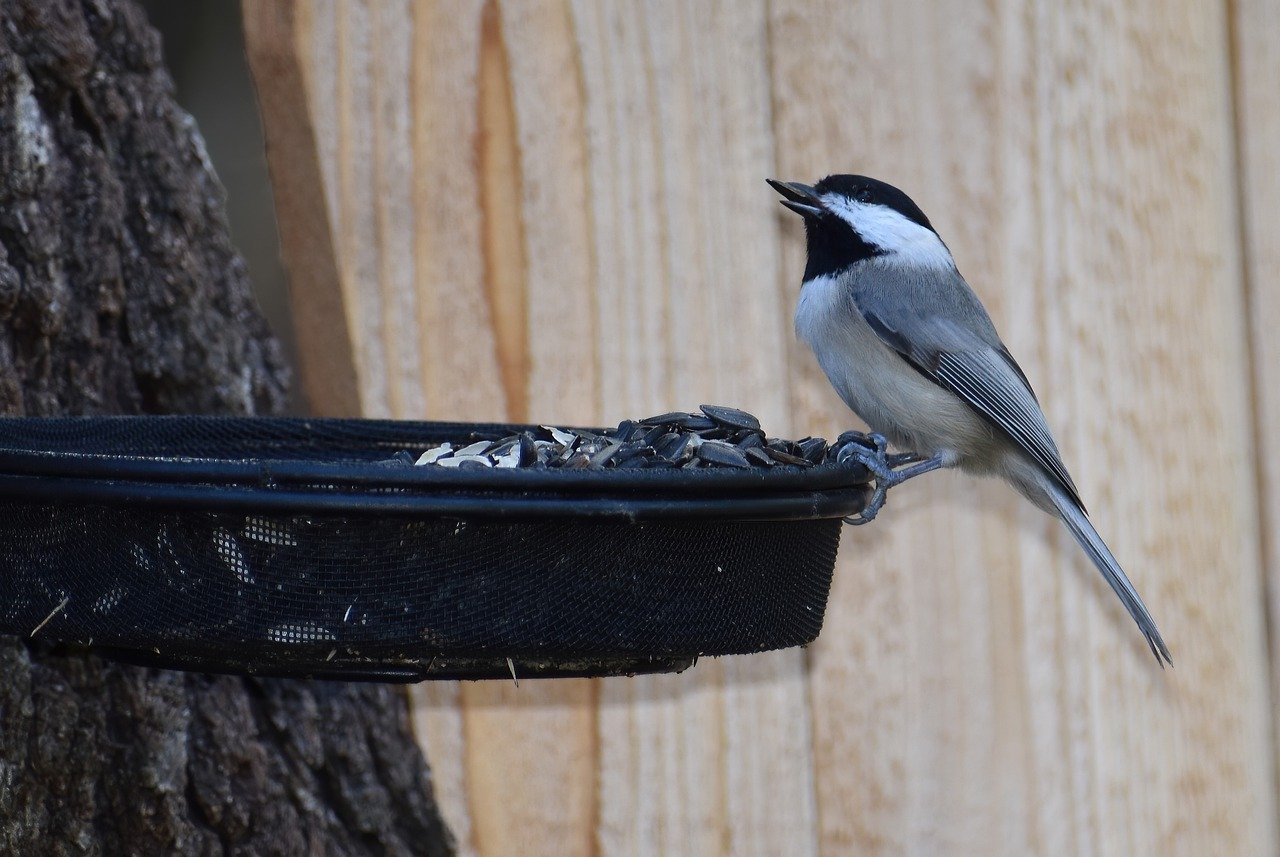
Traditional Wooden Feeders
When it comes to crafting bird feeders, hold a special place in the hearts of many bird enthusiasts. These feeders are not only sturdy and durable, but they also blend seamlessly into natural garden settings, providing a rustic charm that attracts both birds and admirers alike. Choosing the right type of wood is essential for ensuring longevity and resilience against the elements. For instance, cedar and redwood are excellent choices due to their natural resistance to rot and insects. Not only do they last longer, but they also have a beautiful grain that adds to the aesthetic appeal of your garden.
When designing your wooden feeder, consider the style that best suits your garden. Some popular styles include hanging feeders, platform feeders, and house-style feeders. Each style serves a unique purpose and can attract different bird species. For example, hanging feeders are great for attracting finches and chickadees, while platform feeders can accommodate larger birds like doves and jays. The versatility of wooden feeders allows you to create a variety of designs that cater to the preferences of the feathered friends visiting your garden.
To ensure your wooden bird feeder is not only functional but also visually appealing, consider adding a few finishing touches. A coat of non-toxic wood sealant can protect your feeder from moisture and UV rays, extending its life significantly. You might also want to paint or stain your feeder in colors that complement your garden, but be sure to use bird-safe materials. Remember, the goal is to create a welcoming environment for birds while enhancing your garden decor.
Here’s a quick rundown of the types of wood you might consider for your traditional wooden feeders:
| Type of Wood | Benefits |
|---|---|
| Cedar | Natural resistance to rot; lightweight; attractive grain. |
| Redwood | Durable; resistant to insects; beautiful finish. |
| Pine | Readily available; cost-effective; can be treated for longevity. |
In conclusion, crafting a traditional wooden bird feeder is an exciting project that not only beautifies your garden but also invites nature into your home. With the right materials and design, you can create a feeder that stands the test of time while providing a cozy dining spot for your avian visitors. So grab your tools, unleash your creativity, and let the birds come flocking!
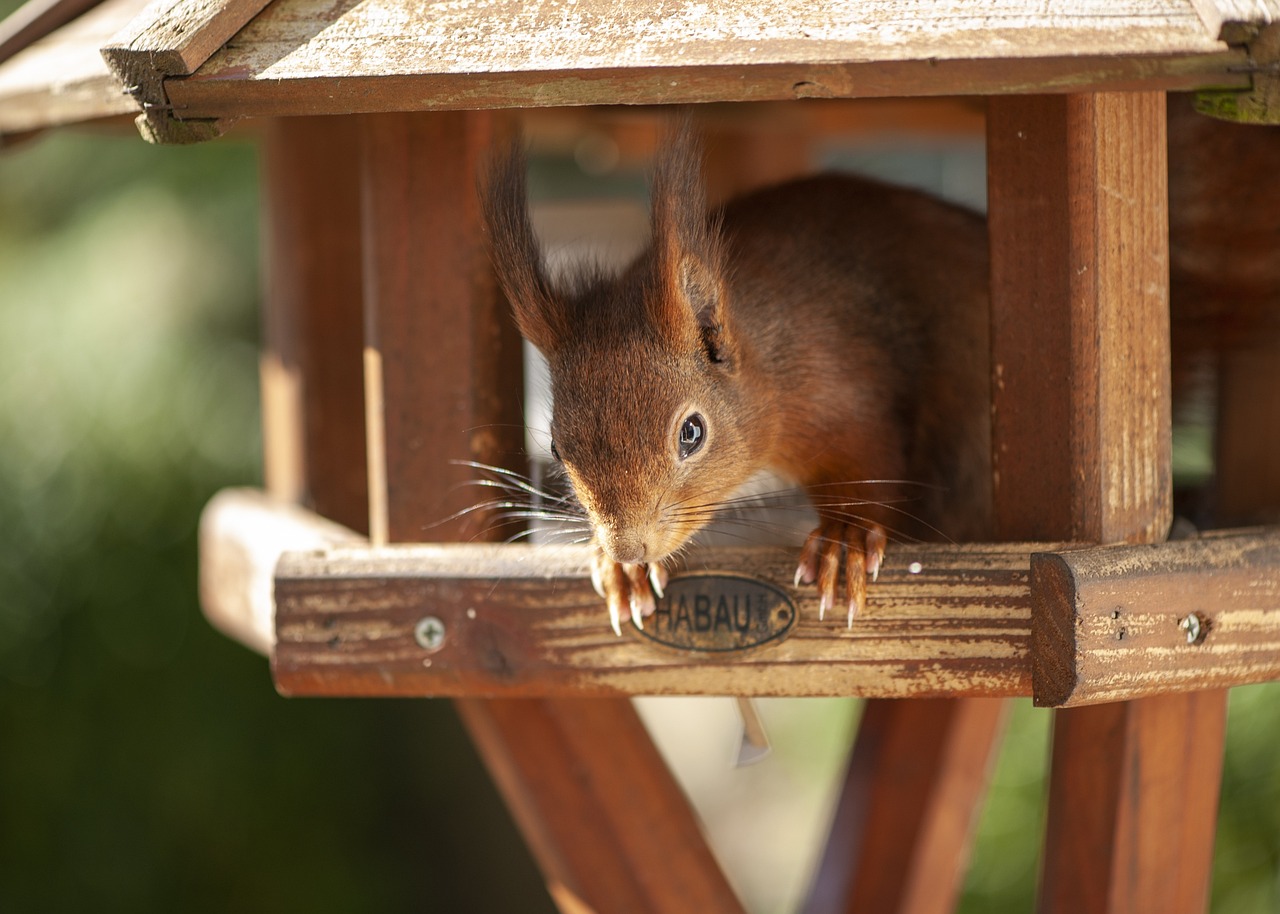
Hanging Feeders
Hanging feeders are not just practical; they add a splash of charm to your garden! Imagine a beautiful day, the sun shining, and birds flitting about while you enjoy a cup of coffee on your porch. By incorporating hanging feeders into your outdoor space, you can create a delightful scene that attracts a variety of feathered friends. These feeders are versatile, allowing you to suspend them from tree branches, hooks, or even your porch railing, making them easy to spot for the birds while also enhancing your garden's aesthetic.
When designing your hanging feeder, consider the materials you will use. A sturdy construction is essential, especially if you live in an area prone to strong winds or rain. Wood is a popular choice due to its durability and natural look. However, you can also explore options like metal or heavy-duty plastic. The key is to ensure that whatever material you choose can withstand the elements and provide a safe feeding area for birds.
One of the most appealing aspects of hanging feeders is their ability to attract a variety of bird species. Depending on the type of food you offer, you can entice everything from finches to cardinals. For instance, sunflower seeds are a favorite among many birds, while nectar feeders can attract hummingbirds with their vibrant colors and sweet offerings. You can even create a mixed feeder that combines seeds, nuts, and fruits to cater to various preferences.
To make your hanging feeder even more enticing, consider adding a few decorative elements. Bright colors or unique shapes can catch the attention of passing birds. Additionally, you might want to position your feeder near natural cover, like shrubs or trees, giving birds a safe place to perch and observe their surroundings before they swoop in for a meal. This setup not only makes it easier for birds to access the feeder but also provides them with a sense of security.
Lastly, it’s essential to keep your hanging feeders clean. Regular maintenance ensures that the food remains fresh and prevents the spread of diseases among birds. A simple rinse with warm soapy water followed by a thorough drying will keep your feeder in top shape. By providing a clean and inviting feeding station, you're not just attracting birds; you're also contributing to their health and well-being.
In summary, hanging feeders are a wonderful addition to any garden. They are easy to install, can be made from various materials, and offer a fantastic way to observe and enjoy local wildlife. So why not give it a try? Your garden will thank you, and so will the birds!
- How high should I hang my bird feeders? It's best to hang feeders at least 5-6 feet off the ground to keep them safe from predators.
- What type of food should I put in my hanging feeders? Sunflower seeds, suet, and nectar are great options for attracting a variety of birds.
- How often should I clean my feeders? Clean your feeders every two weeks, or more often in hot weather, to prevent mold and bacteria growth.
- Can I use any type of container for my hanging feeder? While you can be creative, ensure that any container is safe for birds and won't pose any risks.

Platform Feeders
Platform feeders are a fantastic addition to any garden, providing ample space for a variety of birds to gather and feast. Imagine a bustling backyard filled with chirps and flutters as different species come together to enjoy a meal! These feeders are typically flat, open trays that can accommodate multiple birds at once, making them ideal for attracting a crowd. One of the best aspects of platform feeders is their versatility; they can be placed on the ground, mounted on poles, or even hung from trees. This flexibility allows you to create a feeding station that suits your garden's layout and the preferences of your feathered friends.
When designing your platform feeder, consider the size and materials you want to use. The feeder should be large enough to hold a good amount of food, yet not so big that it becomes unwieldy. A common dimension for a platform feeder is around 12 to 24 inches square, which provides plenty of space without taking over your garden. As for materials, sturdy wood or weather-resistant plastic are excellent choices. They can withstand the elements while remaining safe for birds. Make sure to include drainage holes in the bottom of the feeder to prevent water accumulation, which can spoil the food.
Now, let's delve into some of the benefits of platform feeders. One significant advantage is that they can accommodate a wide variety of bird species. Since the feeder is open, larger birds such as cardinals, jays, and even doves can partake in the feast, alongside smaller birds like finches and siskins. This inclusivity creates a vibrant atmosphere in your garden, allowing you to witness the beauty of nature up close. Additionally, platform feeders can be filled with diverse food options, such as seeds, nuts, fruits, and even suet, which can attract different birds based on their preferences.
Another key point to consider is the placement of your platform feeder. Positioning it in an open area, away from heavy brush or dense foliage, allows birds to spot it easily. However, it's also essential to ensure there are nearby perches, such as trees or shrubs, where birds can rest and survey the area before approaching the feeder. This balance of visibility and safety will encourage more birds to visit, turning your garden into a lively birdwatching haven.
In summary, platform feeders are not just functional; they can also become a stunning focal point in your garden. With the right design and placement, these feeders can attract a diverse array of birds, bringing life and color to your outdoor space. Plus, they offer a wonderful opportunity for you to connect with nature, as you observe the delightful interactions between different bird species. So, gather your materials, unleash your creativity, and get ready to enjoy the sights and sounds of your new feathered friends!

Recycled Materials for Eco-Friendly Feeders
Creating bird feeders from recycled materials is not only a fantastic way to reduce waste, but it also adds a unique character to your garden. Imagine transforming everyday items that would typically end up in the landfill into beautiful, functional feeders that attract a variety of birds. It’s like giving a second life to these materials while also making your backyard a haven for feathered friends!
One of the most popular items to use is the humble plastic bottle. With just a few cuts and some twine, you can create a simple yet effective feeder. Simply cut a few small holes in the sides of the bottle for birds to access the seeds, fill it up, and hang it from a tree branch. Not only does this method utilize something that would otherwise be discarded, but it also creates a feeder that can hold a good amount of seed, ensuring your avian guests won’t go hungry. Additionally, the transparent design allows you to easily monitor seed levels.
Another innovative option is using tin cans. These sturdy containers can be transformed into charming feeders with a little paint and some creativity. After thoroughly cleaning the can, you can punch holes in the bottom for drainage and attach a wire handle for easy hanging. Decorate the can with non-toxic paint or natural jute twine to add a rustic touch. This not only makes the feeder visually appealing but also ensures it blends seamlessly into your garden decor.
Here are some other recycled materials you might consider:
- Old Wooden Pallets: These can be disassembled and reconfigured into platform feeders.
- Tea Cups and Saucers: Create whimsical hanging feeders by attaching them to a tree with wire.
- Egg Cartons: Fill the compartments with seeds and hang them up for smaller birds.
Using recycled materials to create bird feeders not only helps the environment but also sparks creativity. It's a wonderful project for families to engage in together, teaching kids the importance of recycling and caring for wildlife. Plus, there’s something incredibly satisfying about watching birds flock to a feeder you made with your own hands. So next time you’re about to toss something out, think twice! It could be the perfect foundation for your next DIY bird feeder.
Incorporating these eco-friendly feeders into your garden not only enhances its aesthetic appeal but also contributes to a sustainable lifestyle. By attracting different bird species, you’ll be fostering a vibrant ecosystem right outside your window, making birdwatching an exciting and educational experience for everyone in the family!
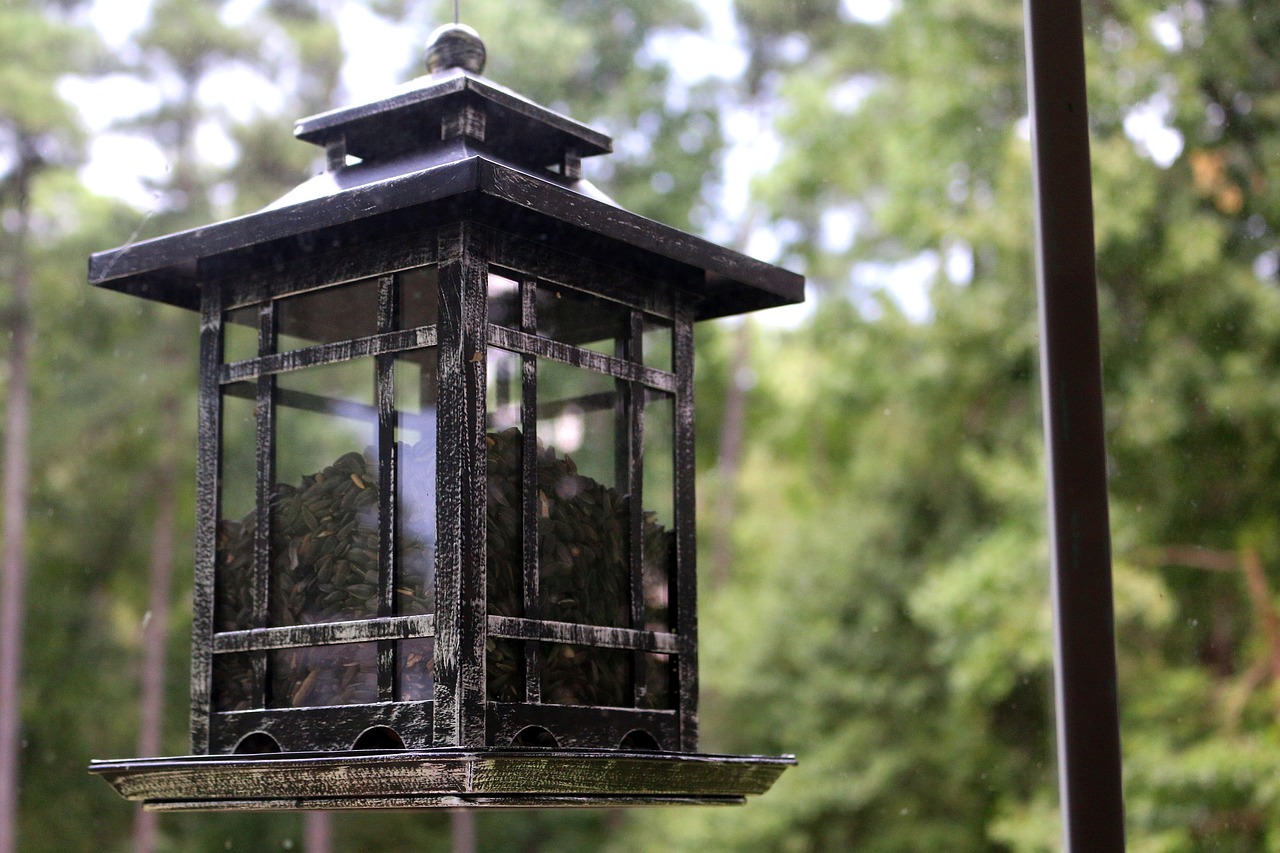
Feeding Tips for Attracting Birds
Attracting a diverse array of birds to your garden can be a rewarding experience, but it requires a bit of knowledge about their feeding preferences. To create a welcoming environment for our feathered friends, you need to consider not only the types of food you offer but also when and how you present it. Birds are incredibly diverse, and different species have unique tastes and dietary needs. For instance, while some birds prefer seeds, others may be more inclined to enjoy fruits or insects. So, what should you put in your feeders to ensure a bustling birdwatching experience right outside your window?
First and foremost, seed selection is crucial. A mix of sunflower seeds, millet, and safflower seeds can attract a variety of birds, including finches, sparrows, and cardinals. You might also want to consider offering nuts, which are a favorite among woodpeckers and jays. Don’t forget about fruits! Slices of apples, oranges, or even berries can entice thrushes and robins. However, it’s essential to keep your offerings fresh; moldy or spoiled food can harm birds, so check your feeders regularly.
Another important aspect is the placement of your feeders. Ideally, they should be located in a quiet area, away from predators, but visible enough for birds to spot them easily. Hanging feeders from trees or hooks can provide a safe haven, while platform feeders should be placed low to the ground to accommodate ground-feeding birds. Consider the layout of your garden and how birds will navigate it—creating a natural flow can encourage more visits.
As seasons change, so do the dietary needs of birds. During the colder months, high-energy foods such as suet and peanut butter can provide the necessary calories for survival. In contrast, spring and summer are prime times for offering insects and fresh fruits. Understanding seasonal feeding considerations is vital for maintaining a steady stream of birds throughout the year. For instance, you might want to switch to a fruit-based diet in the warmer months when insects are plentiful.
Finally, keeping your feeders clean is essential. Regularly wash them with soap and water to prevent the spread of disease among birds. A clean feeder is not only more appealing but also ensures that your garden remains a safe place for birds to visit. By following these feeding tips, you’ll create a haven for birds that will delight you with their presence and songs.
1. What is the best food to attract birds?
A mix of sunflower seeds, millet, and fruits is generally effective. Adjust according to the species you want to attract.
2. How often should I refill my bird feeders?
It’s best to refill feeders every few days, especially during peak feeding times, to ensure fresh food is always available.
3. Can I use old food in my bird feeders?
No, avoid using old or moldy food, as it can harm birds. Always check for freshness before refilling.
4. How can I keep my feeders clean?
Wash your feeders with soap and water at least once a month, or more often if you notice any residue or mold.
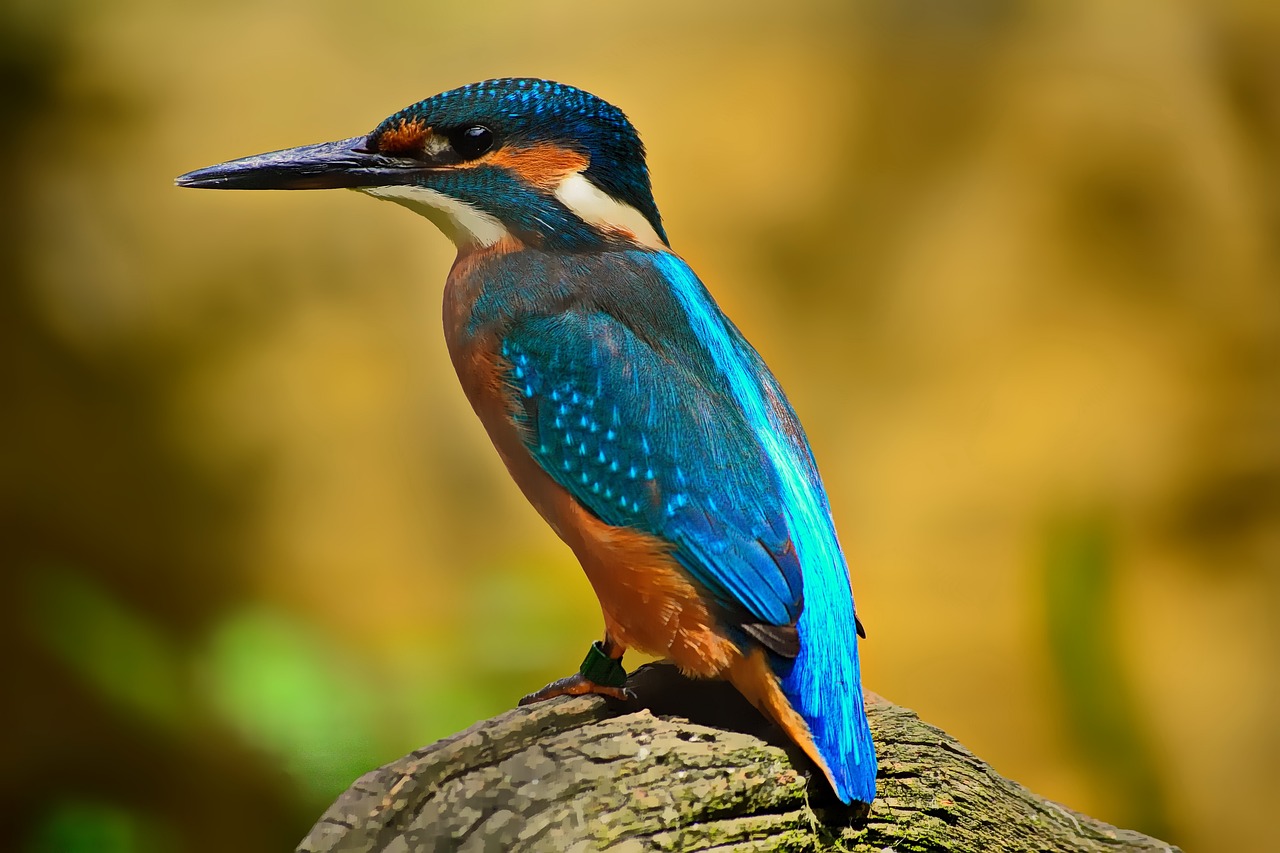
Seasonal Feeding Considerations
When it comes to attracting birds to your garden, understanding their seasonal feeding habits is crucial. Just like humans, birds have different needs depending on the time of year. For instance, during the harsh winter months, birds require high-energy foods to help them survive the cold. This is the perfect time to offer suet cakes and high-fat seeds that provide the necessary calories. On the other hand, in spring and summer, birds are often busy feeding their young, so they’ll appreciate a diet rich in protein. This means incorporating mealworms and sunflower seeds into your feeders.
As the seasons change, so should your approach to feeding. In the fall, many birds are preparing for migration, and they will be looking for energy-rich foods to fuel their long journeys. Offering a mix of seeds and nuts can help them stock up on energy. Additionally, it’s important to consider the types of birds you want to attract during each season. For example, while some species are year-round residents, others may only visit during migration periods. By adjusting your feeder offerings, you can create a welcoming environment for both permanent and seasonal visitors.
Here’s a quick overview of seasonal feeding considerations:
| Season | Recommended Foods | Bird Behavior |
|---|---|---|
| Winter | Suet, peanuts, sunflower seeds | Seeking high-energy foods for warmth |
| Spring | Mealworms, nectar, sunflower seeds | Feeding young and nesting |
| Summer | Fruits, seeds, insects | Feeding fledglings, high protein needs |
| Fall | Seeds, nuts, dried fruits | Preparing for migration |
By being mindful of these seasonal changes, you can ensure that your bird feeders are continuously stocked with the right offerings. This not only helps the birds thrive but also enhances your birdwatching experience. Imagine sitting in your garden, watching a variety of birds flock to your feeders, each species with its unique colors and songs, all thanks to your thoughtful feeding strategy!
- What types of food attract the most birds? Different birds have different preferences, but a mix of seeds, nuts, and fruits generally attracts a wide variety of species.
- How often should I refill my bird feeders? It depends on the season and the number of birds visiting. In peak seasons, you may need to refill your feeders every few days.
- Can I use old food in my bird feeders? It's best to avoid using old or moldy food, as it can harm the birds. Always ensure the food is fresh.
- What can I do to prevent squirrels from raiding my feeders? Consider using squirrel-proof feeders or placing feeders on poles that are difficult for squirrels to climb.
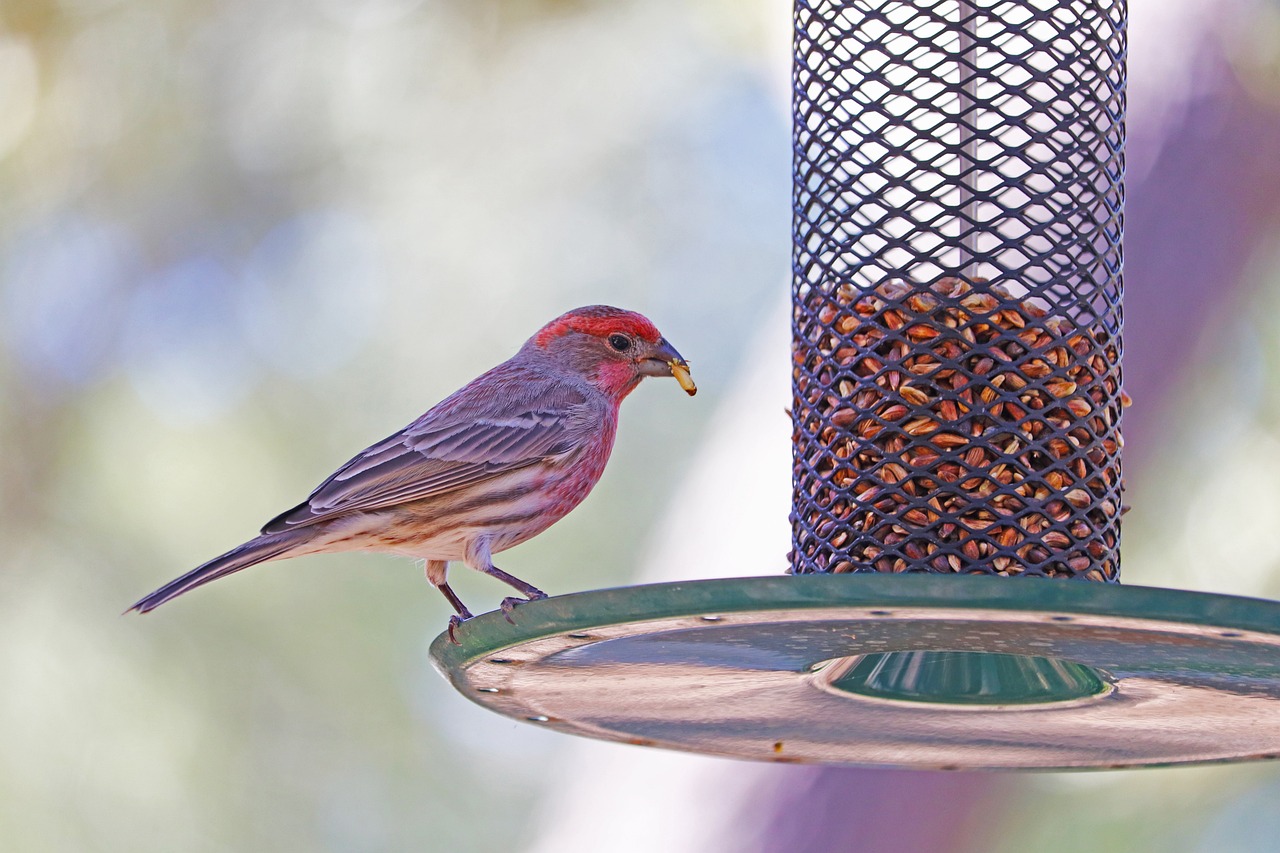
Common Bird Species to Attract
When it comes to attracting feathered friends to your garden, understanding the common bird species in your area can make all the difference. Not only will this knowledge help you choose the right food, but it will also enhance your overall birdwatching experience. Imagine sipping your morning coffee while watching vibrant cardinals and playful chickadees flitting about your feeders—pure bliss!
Let’s dive into some of the most common birds you can attract, along with their food preferences and behaviors. By catering to their needs, you’ll create a haven for them right in your backyard.
| Bird Species | Food Preferences | Feeding Behavior |
|---|---|---|
| American Goldfinch | Nyjer seeds, sunflower seeds | Often feeds in flocks, prefers thistle feeders |
| Black-capped Chickadee | Sunflower seeds, peanuts, suet | Known for their curious nature, they will often take food and cache it for later |
| Northern Cardinal | Sunflower seeds, safflower seeds, fruits | Bold and beautiful, they are often seen at feeders, particularly in the morning and evening |
| Blue Jay | Peanuts, sunflower seeds | Intelligent and social, they are known to mimic other birds' calls |
| Mourning Dove | Seeds, grains | Ground feeders that prefer to eat from the ground or platform feeders |
Each of these birds brings its unique charm and personality to your garden. For instance, the American Goldfinch is a delightful sight with its bright yellow plumage, especially during the summer months. They love to feed on Nyjer seeds, so having a thistle feeder will surely attract them. On the other hand, the Black-capped Chickadee is a friendly little bird that enjoys sunflower seeds and peanuts. Their curious nature makes them fun to watch as they flit from feeder to tree branch.
Moreover, the Northern Cardinal is not just a beautiful bird; its striking red color makes it a garden favorite. They are often attracted to sunflower and safflower seeds, and their presence adds a splash of color, especially during winter months when fewer birds are around. The Blue Jay, with its vibrant blue feathers, is another bird worth attracting. They are known for their intelligence and can be quite social, often seen in pairs or small groups.
Lastly, don’t forget about the Mourning Dove. These gentle birds prefer to feed on the ground, so providing a platform feeder or scattering seeds on the ground can entice them to your garden. They are a symbol of peace and can often be seen resting quietly on branches.
By understanding these common bird species and their preferences, you can create a bird-friendly environment that not only attracts them but also brings joy and tranquility to your outdoor space. Remember, the more diverse your offerings, the more likely you are to see a variety of birds visiting your feeders!
- What is the best type of bird feeder to attract a variety of birds?
Platform feeders and tube feeders are great options as they accommodate different feeding styles.
- How often should I refill my bird feeders?
It’s best to check your feeders every few days, especially during peak feeding seasons, and refill as needed.
- What food should I avoid giving to birds?
Avoid bread, chocolate, and salty foods, as they can be harmful to birds.
- How can I keep squirrels away from my bird feeders?
Consider using squirrel-proof feeders or placing feeders on poles that are difficult for squirrels to climb.
Frequently Asked Questions
- What materials are best for crafting DIY bird feeders?
When it comes to making bird feeders, durability and safety are key. Common materials include wood (like cedar or pine), metal for durability, and even recycled items like plastic bottles. Each material has its own benefits, such as wood being aesthetically pleasing and metal resisting the elements.
- Can I use recycled materials for bird feeders?
Absolutely! Using recycled materials is a fantastic way to create eco-friendly bird feeders. Items like plastic bottles, tin cans, and even old wooden pallets can be transformed into functional feeders. Not only do they help the environment, but they also add a unique touch to your garden decor.
- What types of food should I offer to attract different bird species?
Different birds have different preferences when it comes to food. For example, sunflower seeds attract many songbirds, while nectar is perfect for hummingbirds. Consider offering a mix of seeds, nuts, and fruits to cater to a variety of species visiting your garden.
- How can I adjust my bird feeding strategy with the seasons?
Bird feeding needs can vary greatly with the seasons. In winter, birds require high-energy foods like suet and peanut butter, while in spring and summer, fresh fruits and seeds are more appealing. Keeping an eye on seasonal changes will help ensure your feeders are a reliable food source all year round.
- What are some common bird species I can attract to my garden?
Common backyard birds include cardinals, blue jays, finches, and sparrows. By understanding their feeding habits and preferences, you can tailor your feeding strategy to attract these lovely visitors, creating a vibrant and lively atmosphere in your garden.



















